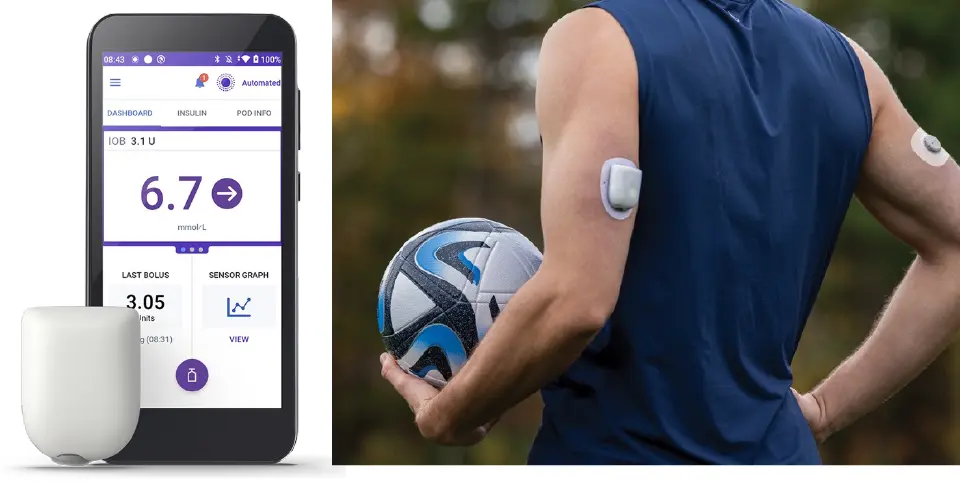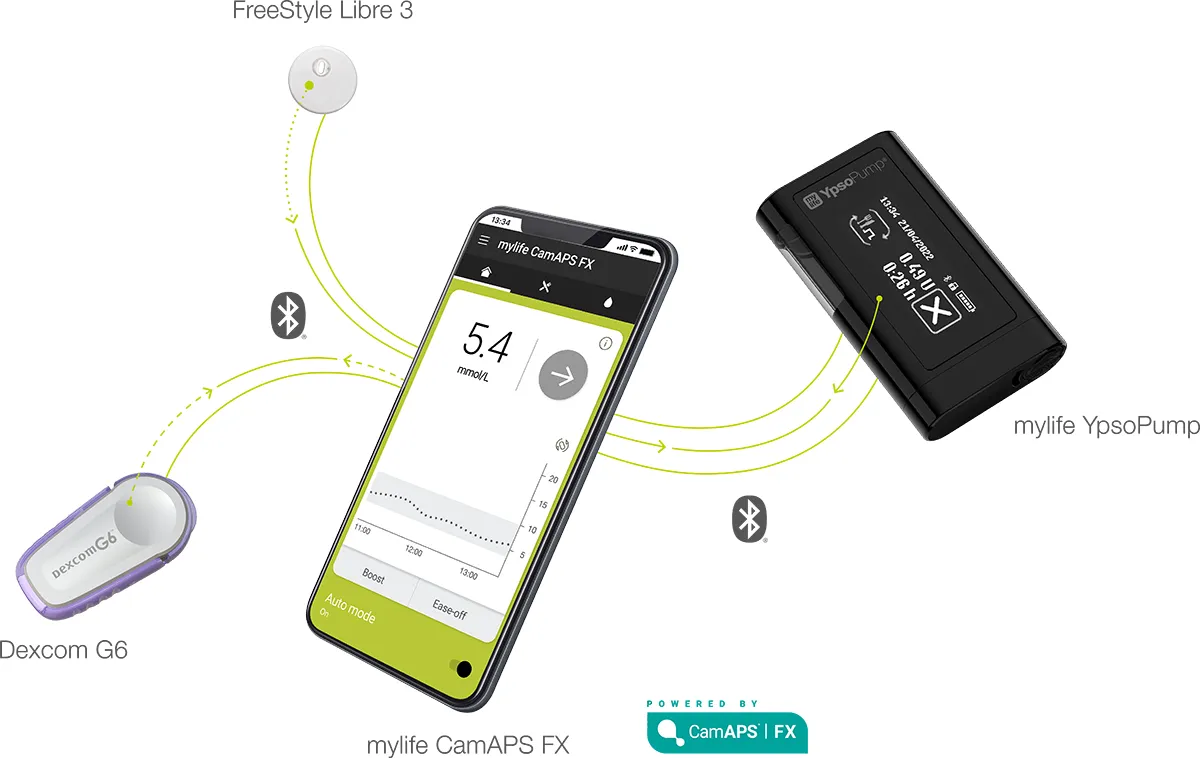
Insulin Pumps and Hybrid Closed Loop Systems
Insulin pumps are small devices that contain a reservoir of rapid-acting insulin that is infused through a small cannula inserted in the fat just below the skin, at a very low rate. They have been in use by many people for a number of years.
 1Omnipod 5. Copyrighted images used with permission. c 2022 Inulet Corporation. All rights reserved
1Omnipod 5. Copyrighted images used with permission. c 2022 Inulet Corporation. All rights reserved
Prior to each meal, a bolus of the same insulin is infused through the cannula. The dose of the bolus has to be set manually each time, using the controls on the pump or an accompanying handset. Many pumps have an automated bolus calculator to work out the correct dose based on the current glucose level and anticipated carbohydrate intake.
A big advantage of using an insulin pump is that there is no need for frequent daily injections; however, the cannula (or patch pump) does need to be changed once every two to three days. The other main advantage is that there is no long-acting insulin injected. Instead, basal insulin is provided by the continuous infusion of insulin. With conventional insulin pump therapy, the basal rate was pre-programmed to maintain glucose levels stable through the 24-hour period.
In the UK, insulin pumps are now provided as part of a hybrid closed loop system. This is where the pump uses information from a continuous glucose monitoring (CGM) system such as a Freestyle Libre or Dexcom sensor. These systems adjust the basal rate continually according to the glucose level, while boluses generally need to be calculated and delivered by the user as before. However, if the bolus dose is incorrect, the closed loop system can compensate by either increasing or decreasing the subsequent infusion rate to avoid the glucose level going too high or too low.

These systems can provide significant benefits both in terms of more stable glucose levels and easing a lot of the stress and mental energy involved with managing diabetes.
They are sometimes referred to as an automatic pancreas. This is not accurate as it is important to understand that these systems are not fully automatic – they do not know for example, what you are going to eat, whether you are unwell or if you about to undertake strenuous exercise. Therefore, the systems need to be told such information by user, and in some cases the automated system needs to be switched off and the pump used in ‘manual mode’. The user should therefore take the role of ‘manager’ of the closed loop system.
I can advise on the different hybrid closed loop systems currently available and can make recommendations based on each person's individual needs and preferences. Due to the current high demand for this technology, in many areas there is now quite a long wait in NHS clinics. For people who wish to fund their own closed-loop system, I can prescribe these via London Medical, where a comprehensive package of training and follow up is available.
